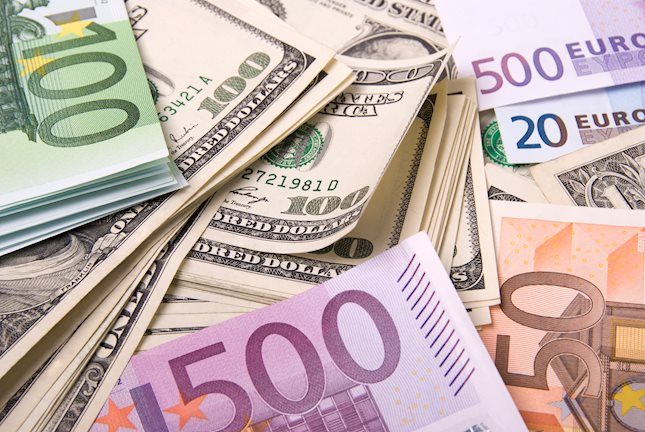Markets
On Friday, U.S. stocks experienced minimal fluctuations, yet they closed the week with a decline of 1.5%. This dip comes as a response to the mounting indicators of a robust U.S. economy, including noteworthy metrics like the ISM services index, weekly jobless claims, and an uptick in oil prices. These developments occurred against the backdrop of an interest rate environment that, while relatively stable, has shown some signs of edging upwards. Moreover, concerns about China's weakening growth prospects have further contributed to the cautious sentiment among investors.
The intricate interplay between growth, inflation, and interest rates remains a central theme as we embark on the "new school year" and approach the fall season. As we entered the summer months, prevailing consensus, particularly among economists, leaned towards the possibility of the United States slipping into a recession. This concern stemmed from the anticipated impact of rising interest rates and lingering apprehensions over the 2021 Tech bubble.
However, as we've moved beyond the summer season, marked by the post-Labor Day period, the narrative has experienced a noteworthy shift. There is now a growing expectation that the U.S. economy may manage to evade a recession. This shift in sentiment reflects a recalibration of economic outlooks and a recognition of the country's resilience in the face of these complex economic dynamics.
As the prevailing narrative coalesces around the notion that the U.S. economy is stable, investors adjust their approach to interpreting growth signals. Earlier in the summer, positive indications of economic growth were seen as a means to reduce the probability of a recession – a development generally favourable for corporate earnings and stock markets. However, the current landscape suggests that signs of growth could now be interpreted as indicative of an economy running 'too hot,' potentially leading to more enduring inflationary pressures. While this may bode well for corporate earnings, it introduces concerns about interest rates and the Federal Reserve's outlook.
Notably, economists like Jan Hatzius (Goldman Sachs) and his team believe the Federal Reserve has already executed its final rate hike for this economic cycle. Their forecasts indicate that the next monetary move could be a rate cut, potentially slated for the second quarter of 2024.
The upcoming Federal Reserve meeting, scheduled for the week after next, will be a pivotal event to watch. Federal Reserve Chair Powell's recent address at the Jackson Hole symposium was slightly more hawkish than his July press conference. Powell acknowledged the FOMC's heightened vigilance regarding indications that the economy may not be cooling down as initially anticipated. This subtle shift in posture underscores the central role of the Fed's decision-making process in navigating the evolving economic landscape.
Despite the release of robust economic data points, the rates markets displayed minimal reactions throughout the week, with 10-year U.S. Treasury yields maintaining a stable range between 4.20% and 4.30%. This resilience in interest rates is noteworthy, given the positive economic indicators.
The enduring stability in rates suggests that market participants are maintaining a cautious stance, potentially reflecting confidence in the underlying strength of the U.S. economy. This optimism, in turn, paints an encouraging picture for consumer spending prospects, not only for the immediate future but extending into and throughout the year 2024.
As we delve deeper into the fall season, monitoring the evolving dynamics between economic growth and interest rates becomes increasingly intriguing. One critical factor that may determine the course of this tension is inflation. The upcoming event is the release of the August Consumer Price Index (CPI) report, scheduled for next Wednesday, September 14th.
This forthcoming CPI report carries significant weight, as it has the potential to provide insights into the inflationary pressures within the economy, especially given the surge in oil prices. Depending on the data, it could influence market sentiments and shape the future direction of interest rates. Investors and economists will keenly observe this release, which may be key to understanding how the delicate balance between growth and rates will unfold in the coming months.
S&P 500 view
Suppose analysts are correct in anticipating a steady progression towards a soft landing in the economy, a development poised to bolster S&P 500 earnings. This optimistic perspective suggests that the index will likely ascend to a 12-month target of 4700, reflecting a 6% increase.
While we believe the risks surrounding our year-end price target of 4500 (representing a 1% gain) are tilted positively, we acknowledge that inconsistent price action might characterize the path for equities in the coming months. The trajectory of equities could be influenced by the ebb and flow of economic growth and inflation data, introducing some potential choppiness into the market landscape.
SPI Asset Management provides forex, commodities, and global indices analysis, in a timely and accurate fashion on major economic trends, technical analysis, and worldwide events that impact different asset classes and investors.
Our publications are for general information purposes only. It is not investment advice or a solicitation to buy or sell securities.
Opinions are the authors — not necessarily SPI Asset Management its officers or directors. Leveraged trading is high risk and not suitable for all. Losses can exceed investments.
Recommended Content
Editors’ Picks

AUD/USD weakens to near 0.6200 ahead of Chinese Services PMI release
The AUD/USD pair softens to near 0.6210 during the early Asian session on Monday. The rising bets that the Reserve Bank of Australia (RBA) will be compelled to start cutting interest rates exert some selling pressure on the Australian Dollar.

EUR/USD: Parity looks likely in 2025 as gap between US-European economies widens
The EUR/USD pair started the year changing hands at around 1.1040 and ended near its yearly low of 1.0332. By September, the pair surged to 1.1213 and the Euro seemed on its way to conquer the world.

Gold: Is another record-setting year in the books in 2025?
Gold benefited from escalating geopolitical tensions and the global shift toward a looser monetary policy environment throughout 2024, setting a new all-time high at $2,790 and rising around 25% for the year.

Week ahead: US NFP to test the markets, Eurozone CPI data also in focus
King Dollar flexes its muscles ahead of Friday’s NFP. Eurozone flash CPI numbers awaited as euro bleeds. Canada’s jobs data to impact bets of a January BoC cut. Australia’s CPI and Japan’s wages also on tap.

Week ahead – US NFP to test the markets, Eurozone CPI data also in focus
King Dollar flexes its muscles ahead of Friday’s NFP. Eurozone flash CPI numbers awaited as euro bleeds. Canada’s jobs data to impact bets of a January BoC cut. Australia’s CPI and Japan’s wages also on tap.

Best Forex Brokers with Low Spreads
VERIFIED Low spreads are crucial for reducing trading costs. Explore top Forex brokers offering competitive spreads and high leverage. Compare options for EUR/USD, GBP/USD, USD/JPY, and Gold.